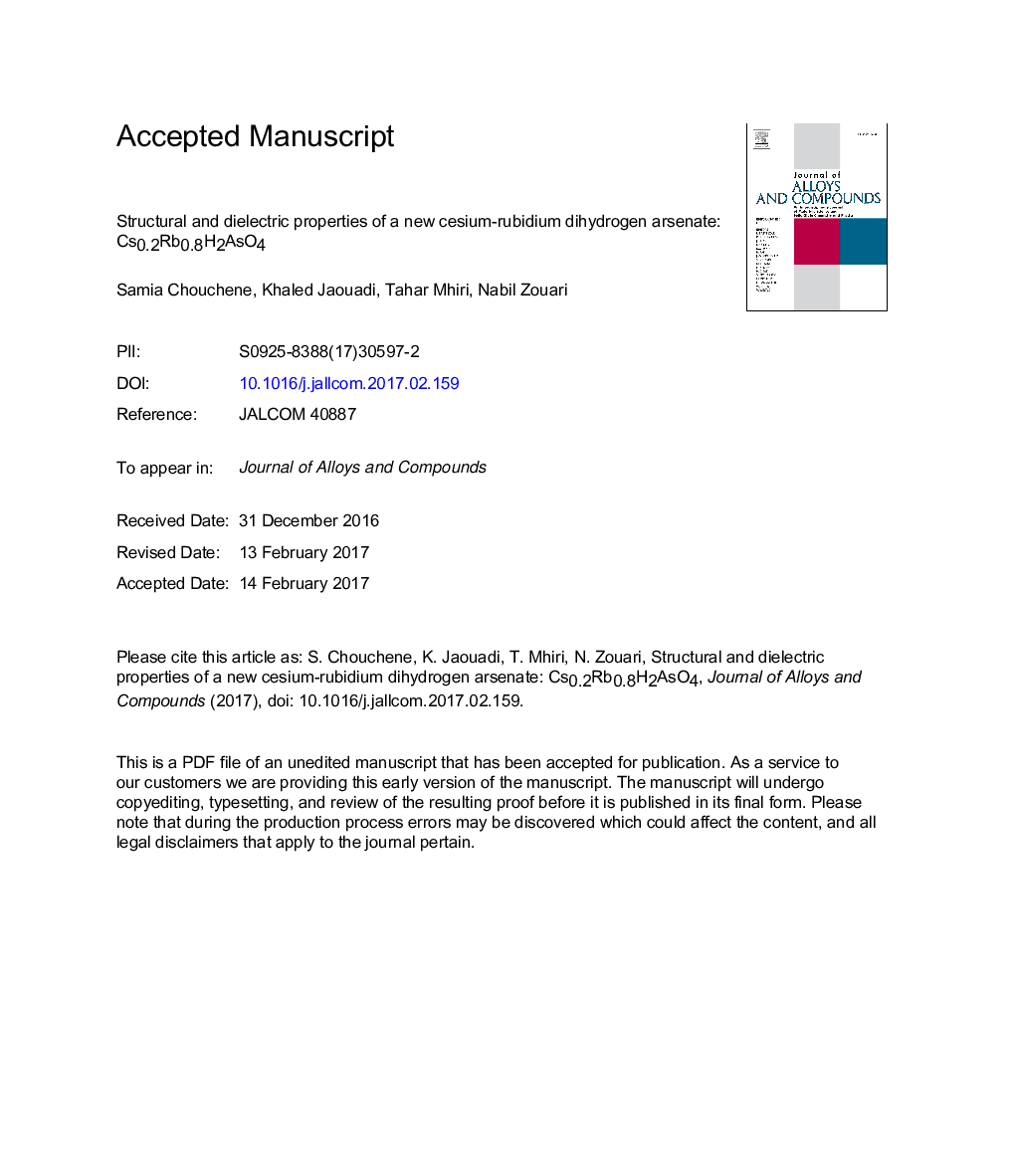| کد مقاله | کد نشریه | سال انتشار | مقاله انگلیسی | نسخه تمام متن |
|---|---|---|---|---|
| 5459840 | 1516189 | 2017 | 27 صفحه PDF | دانلود رایگان |
عنوان انگلیسی مقاله ISI
Structural and dielectric properties of a new cesium-rubidium dihydrogen arsenate: Cs0.2Rb0.8H2AsO4
دانلود مقاله + سفارش ترجمه
دانلود مقاله ISI انگلیسی
رایگان برای ایرانیان
کلمات کلیدی
موضوعات مرتبط
مهندسی و علوم پایه
مهندسی مواد
فلزات و آلیاژها
پیش نمایش صفحه اول مقاله

چکیده انگلیسی
Ongoing studies of the CsH2AsO4-RbH2AsO4 system, aimed at developing novel proton conducting solids, resulted in the new compound Cs0.2Rb0.8H2AsO4 (CRDA). Single crystal X-ray diffraction (performed at room temperature) revealed Cs0.2Rb0.8H2AsO4 to crystallize in tetragonal space group I4¯2d with lattice parameters a = 7.8090 (1) Ã
and c = 7.5010 (1) Ã
. It has a unit cell volume of 457.415 (10) Ã
3 and four formula units per cell. The title compound is isostructural with the tetragonal phases of CsH2AsO4 (CDA) and RbH2AsO4 (RDA). The main feature of this structure is the coexistence of two different cations (Cs+ and Rb+) in the same crystal. In this structure, the arsenic atom as well as the rubidium and cesium ions lie on points with site symmetry S4, the oxygen atoms lies in general positions about the arsenic atoms, in a tetrahedral arrangement. The AsO4 tetrahedra are connected by OHâ¯O hydrogen bonds laying essentially in the a,b plane. The infrared spectrum performed at room temperature in the frequency range 4000-400 cmâ1 confirms the presence of structural disorder in this material. A calorimetric study of the title compound shows two peaks, they are detected at 185 and 433 K. Samples were examined by impedance and modulus spectroscopy techniques. The first transition (185 K) is attributed to a ferroelectric-paraelectric type. A high temperature phase transition (433 K) leading to a superionic-protonic phase was found, characterized by an unusual high conductivity. The conductivity relaxation parameters associated with the high-disorder protonic conduction have been determined from analysis of the Mâ³/Mâ³max spectrum measured in a wide temperature range. Transport properties in this material appear to be due to proton hopping mechanism.
ناشر
Database: Elsevier - ScienceDirect (ساینس دایرکت)
Journal: Journal of Alloys and Compounds - Volume 705, 25 May 2017, Pages 602-609
Journal: Journal of Alloys and Compounds - Volume 705, 25 May 2017, Pages 602-609
نویسندگان
Samia Chouchene, Khaled Jaouadi, Tahar Mhiri, Nabil Zouari,